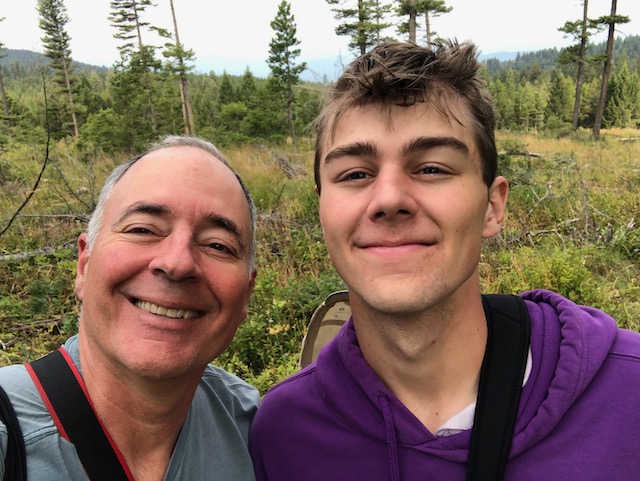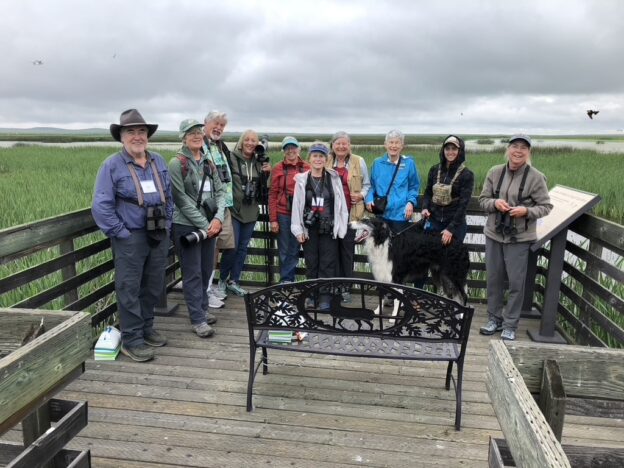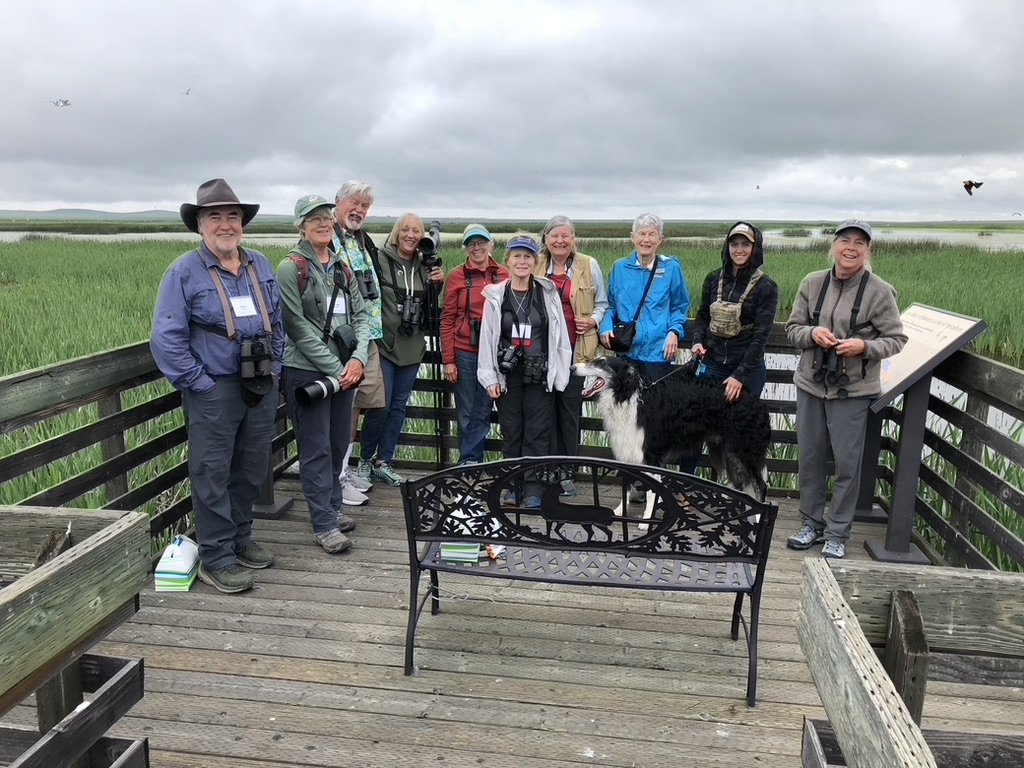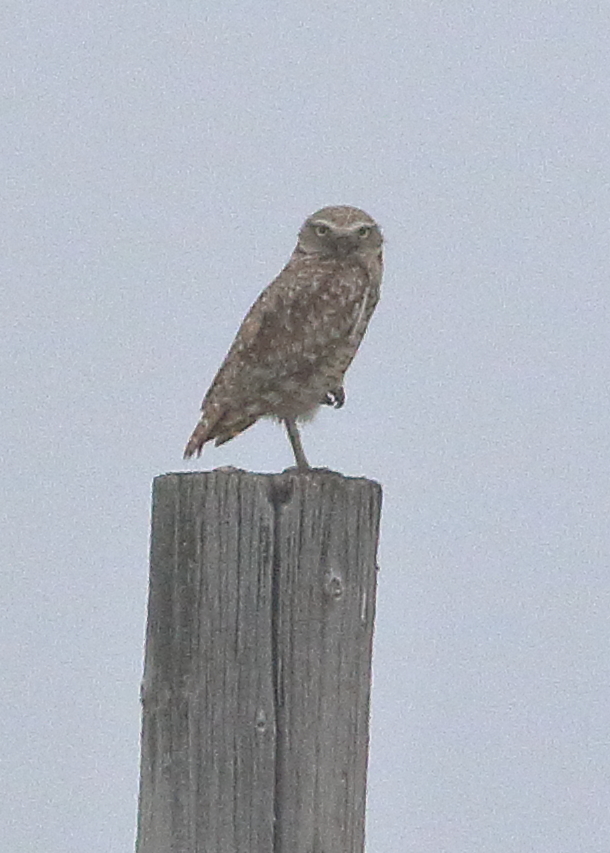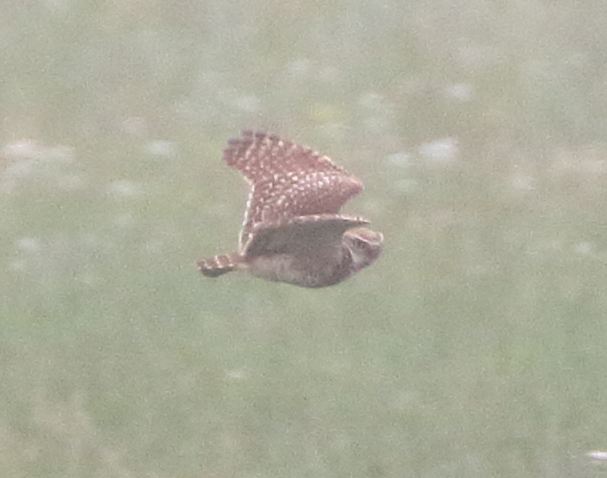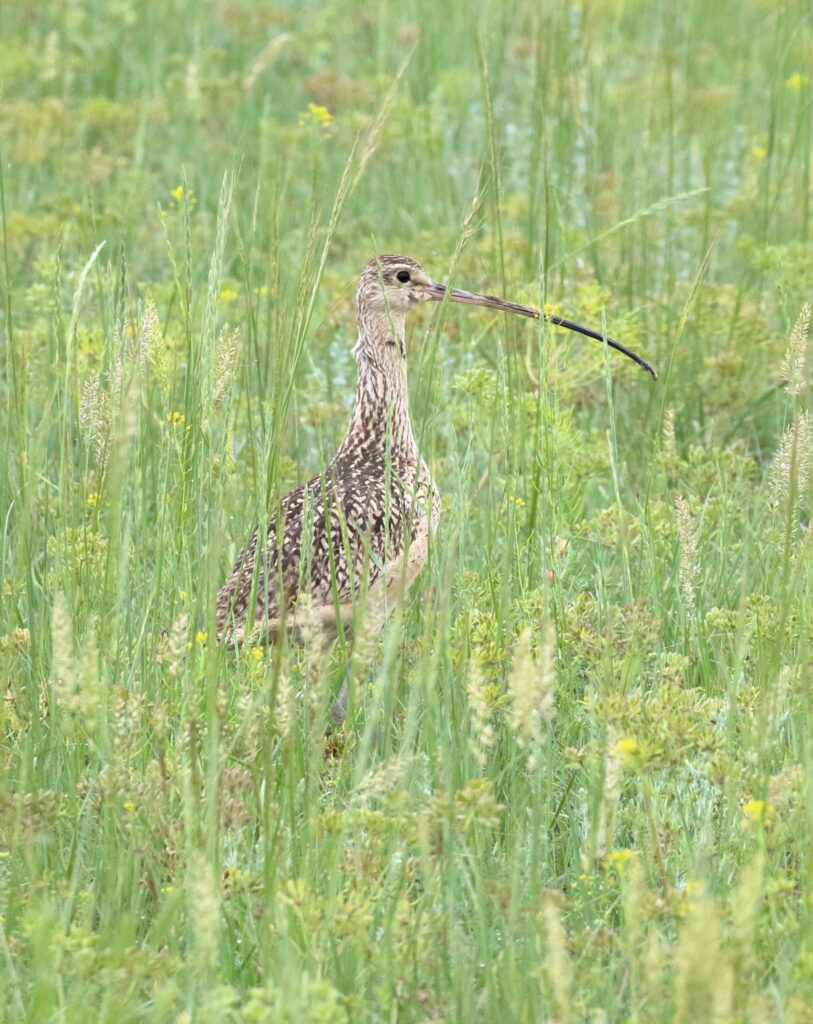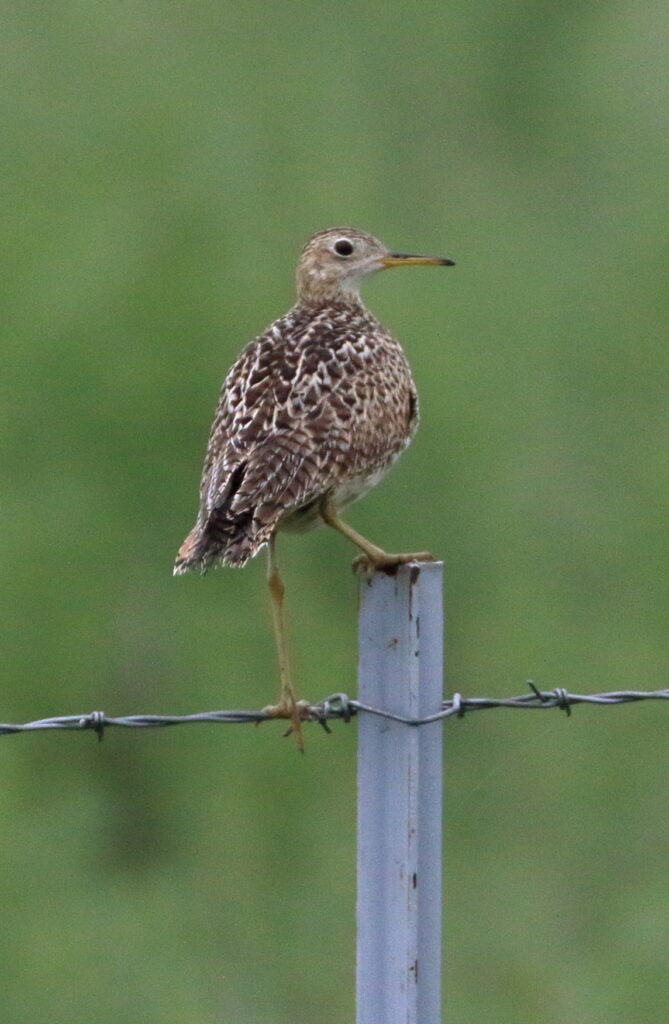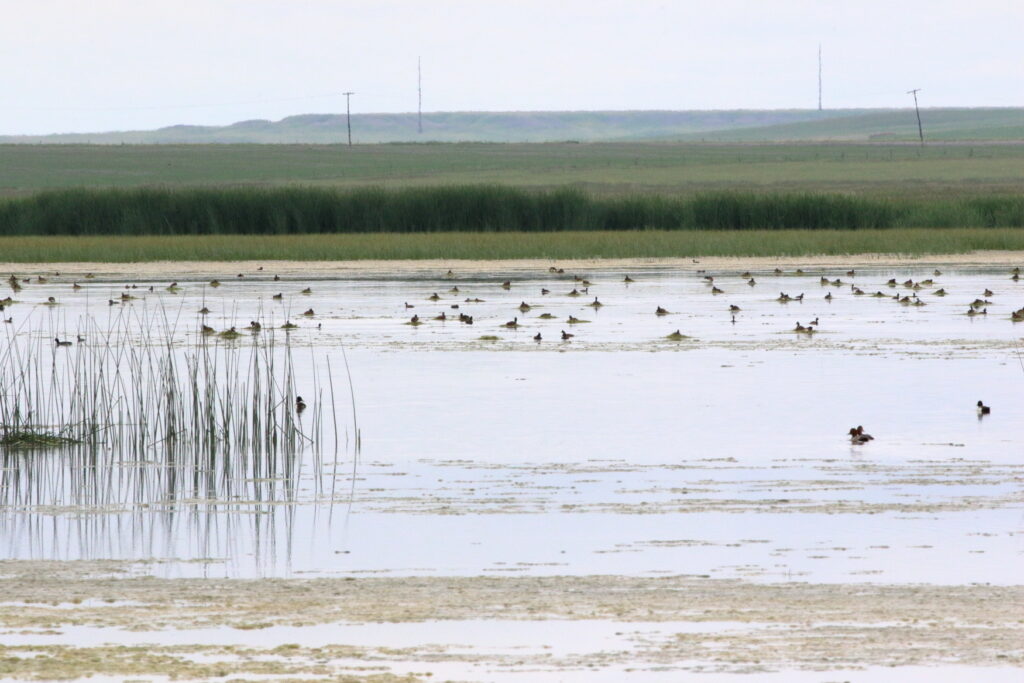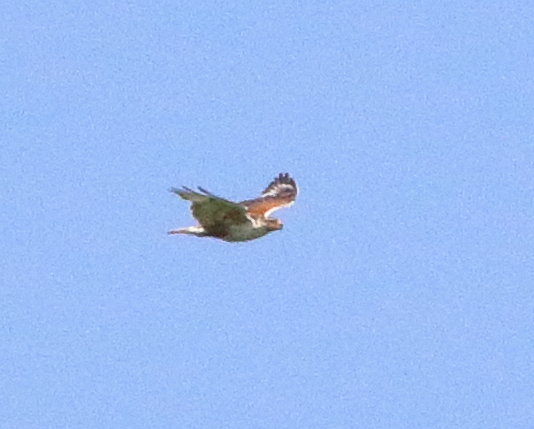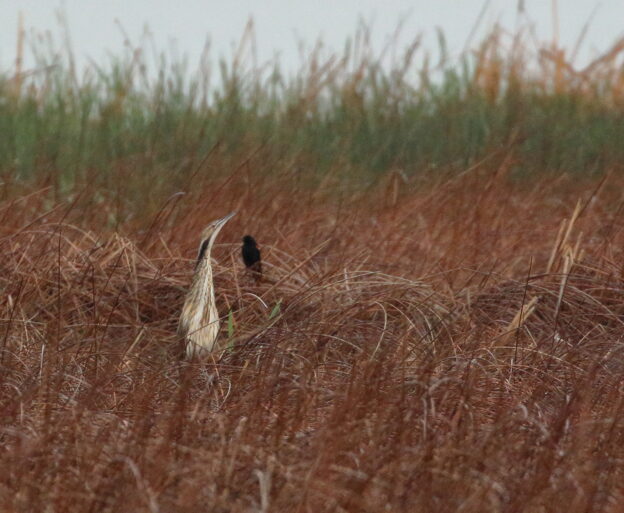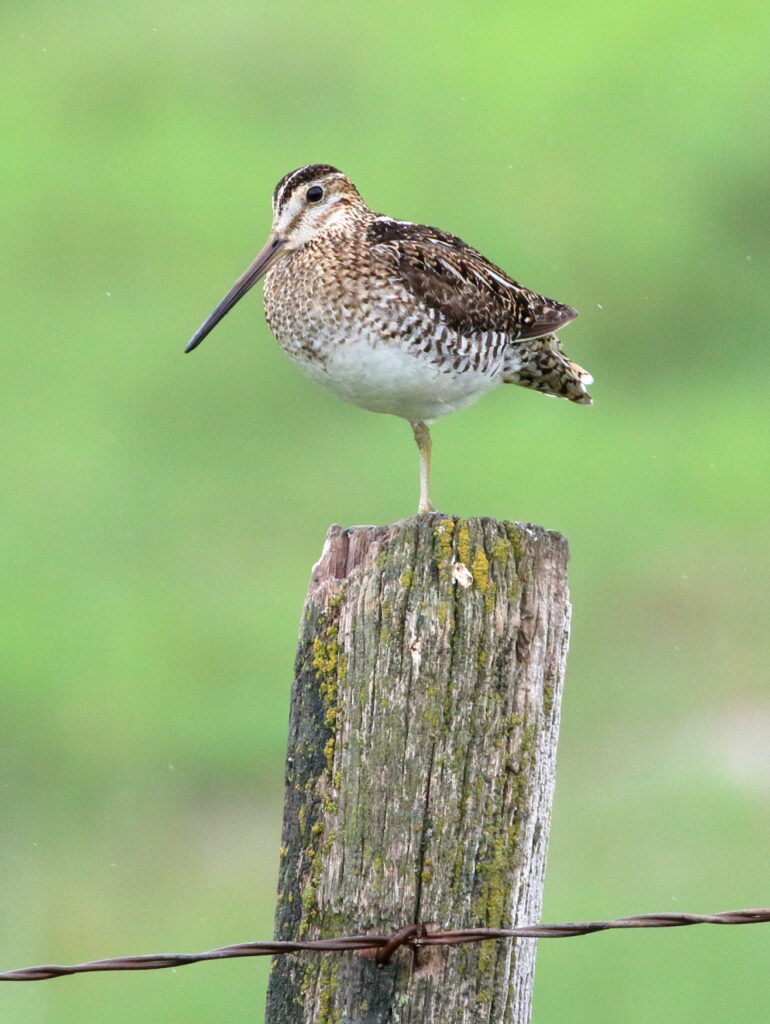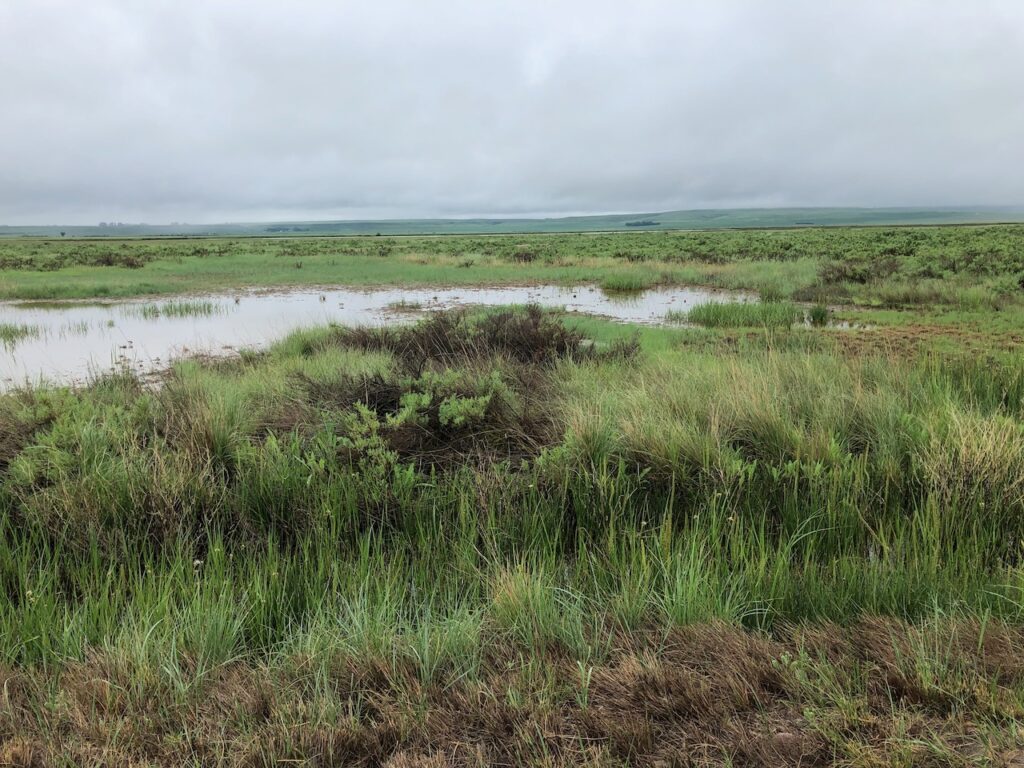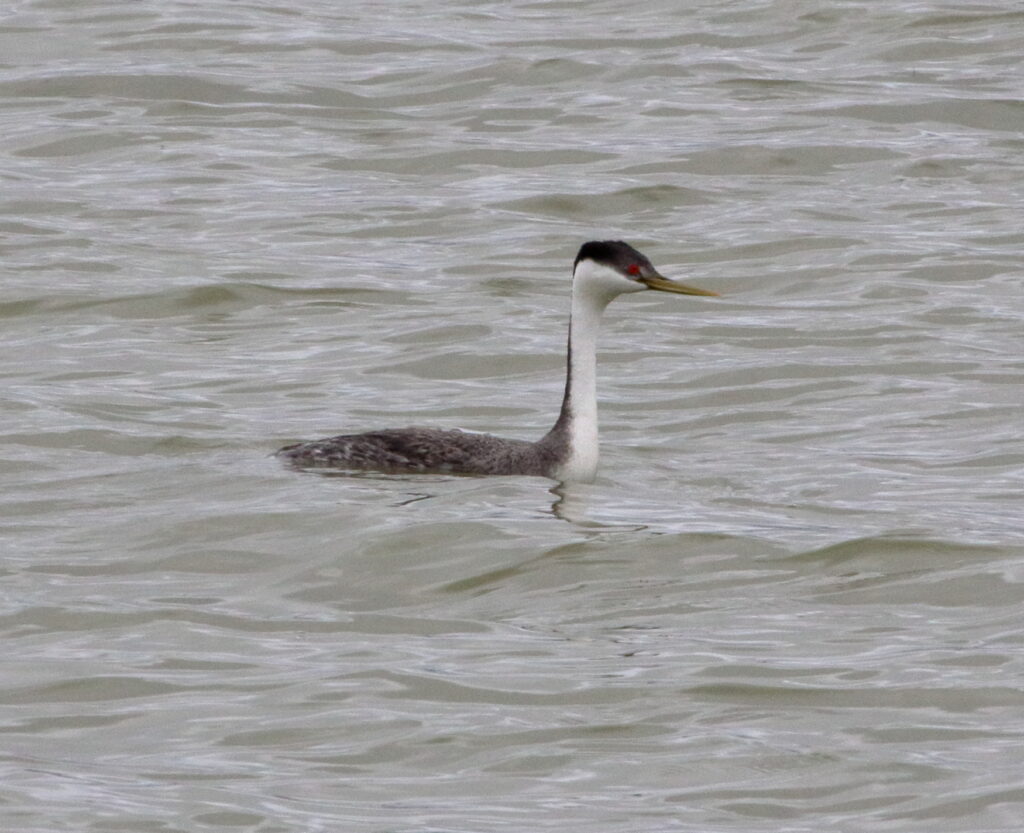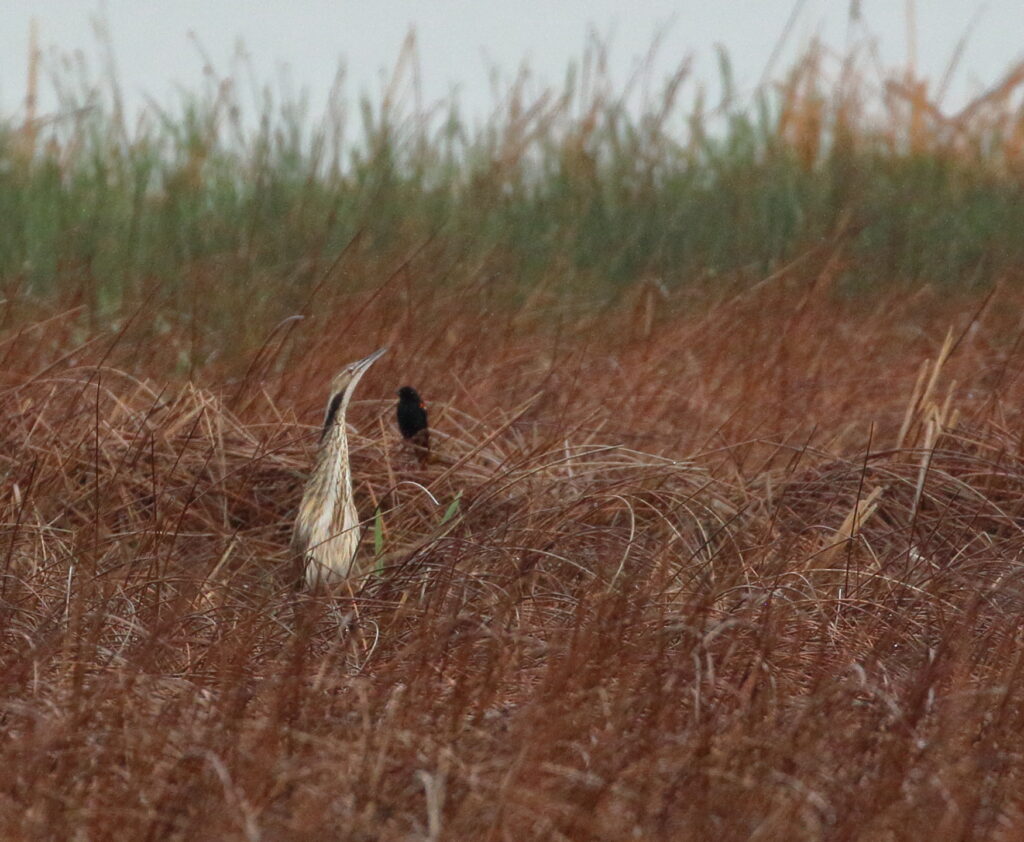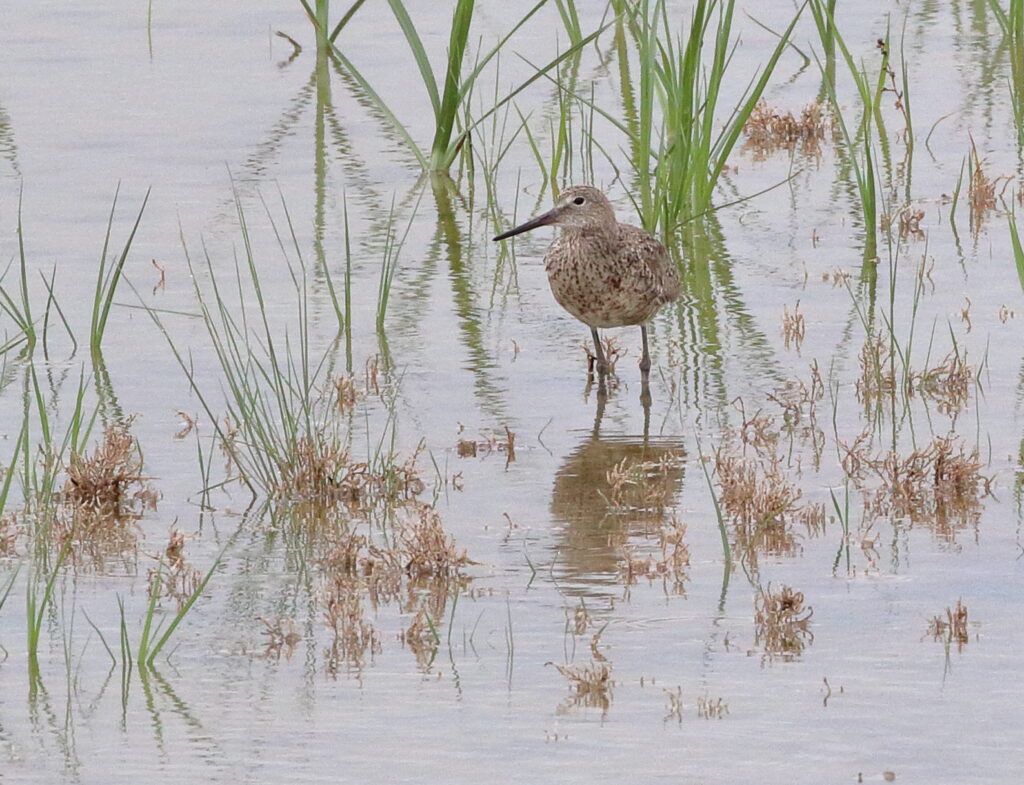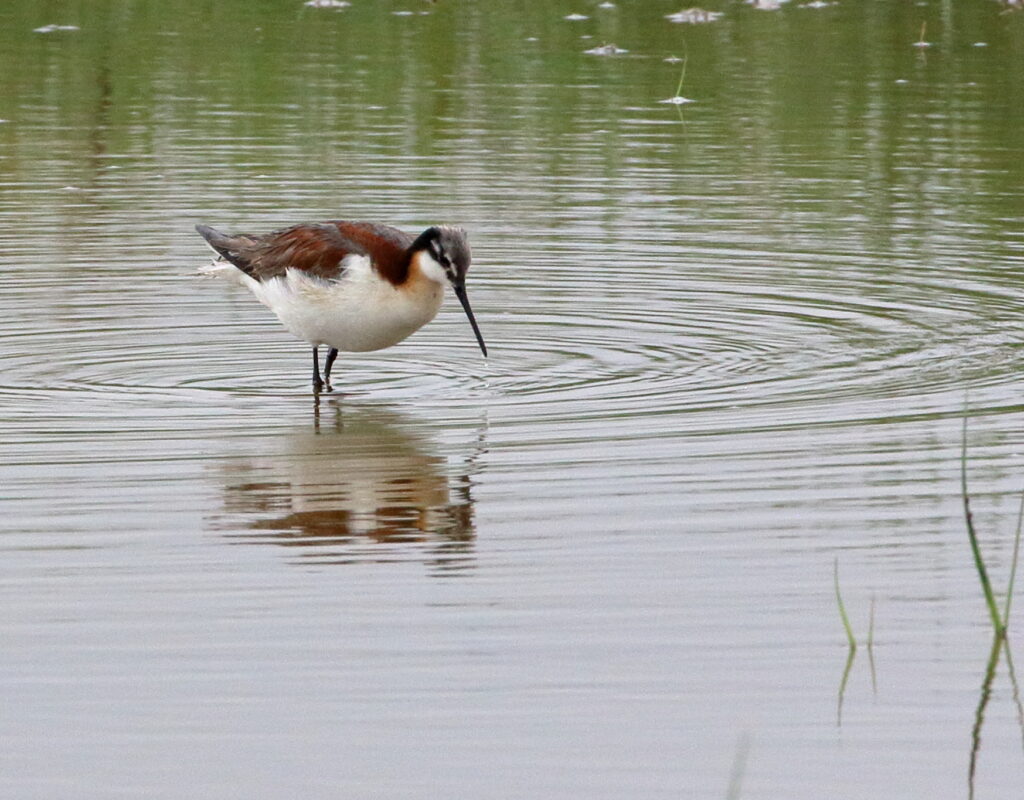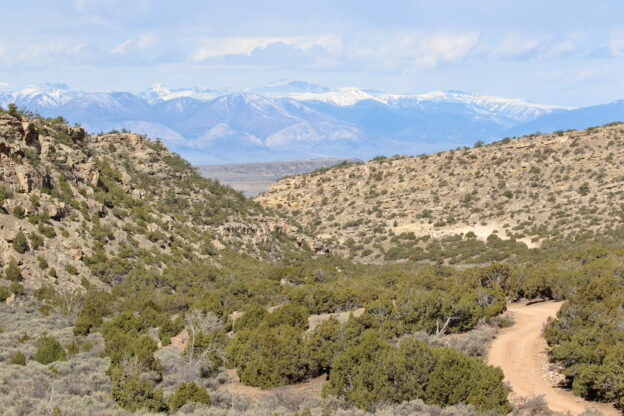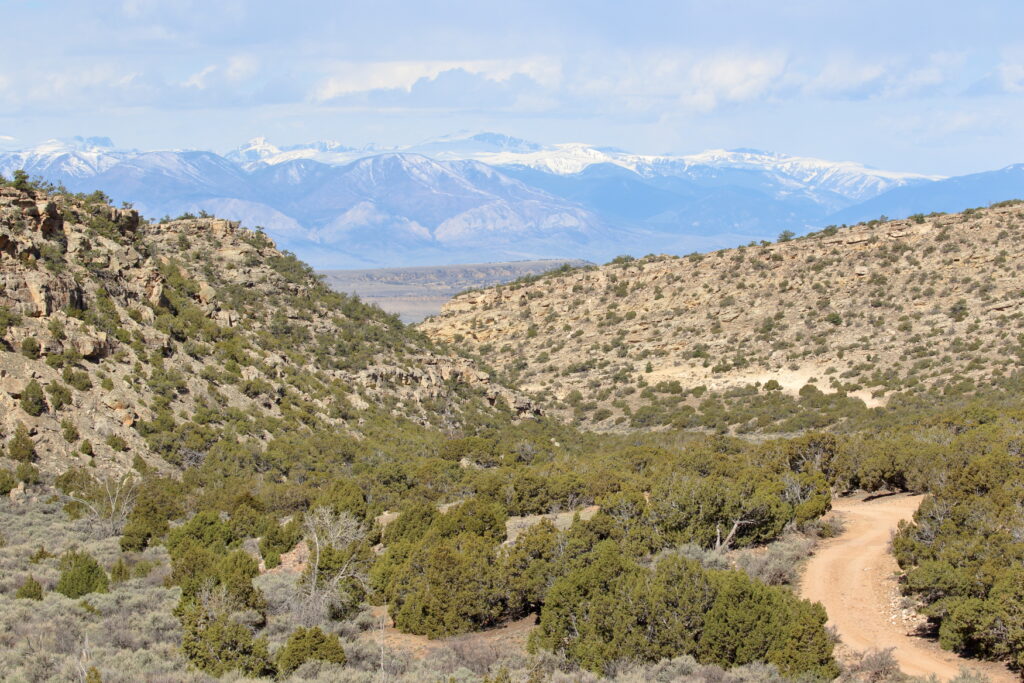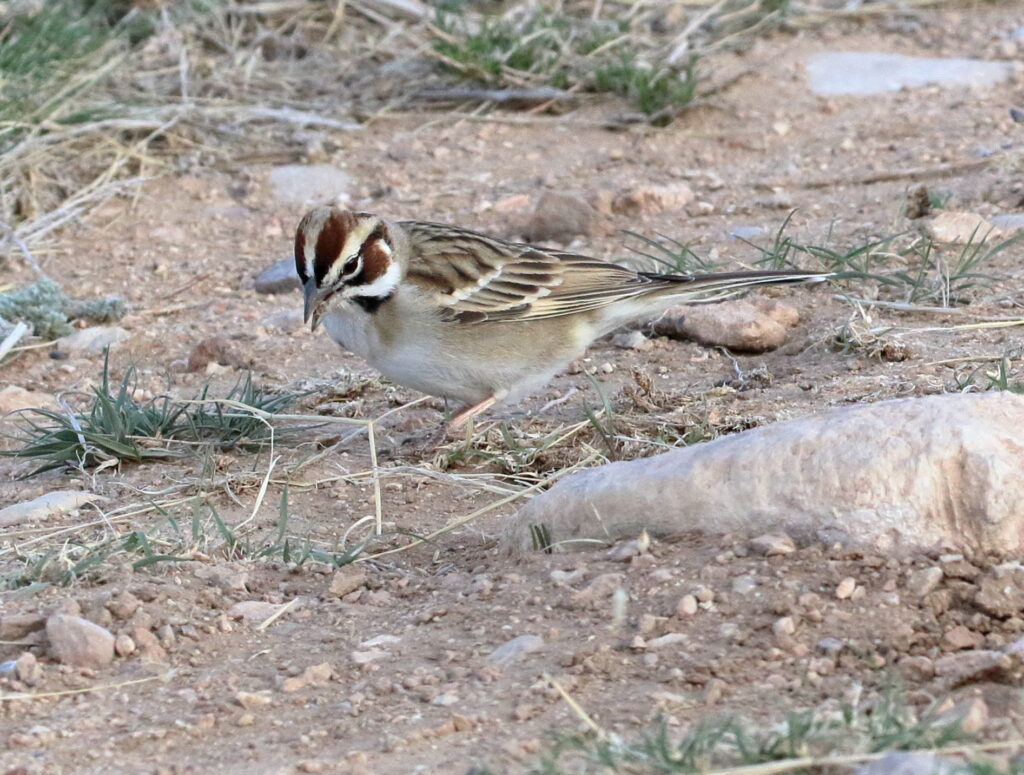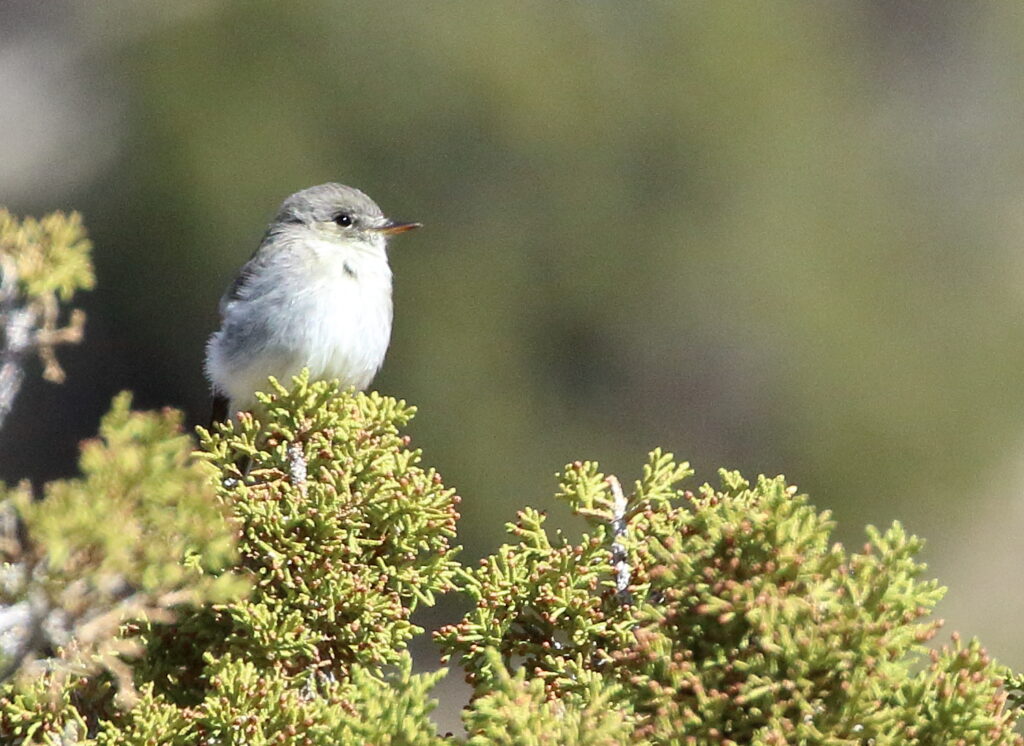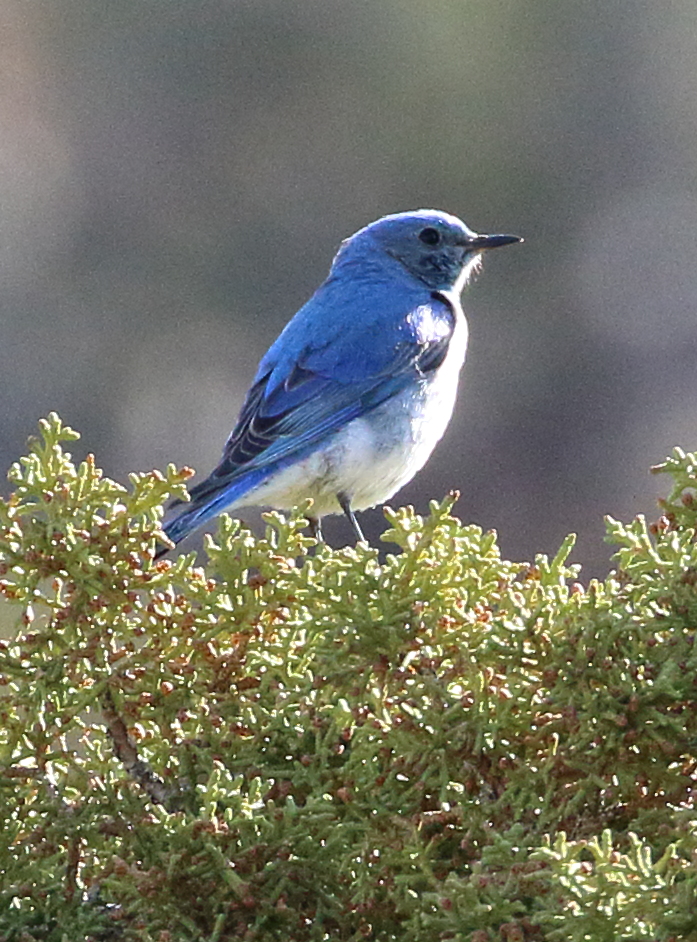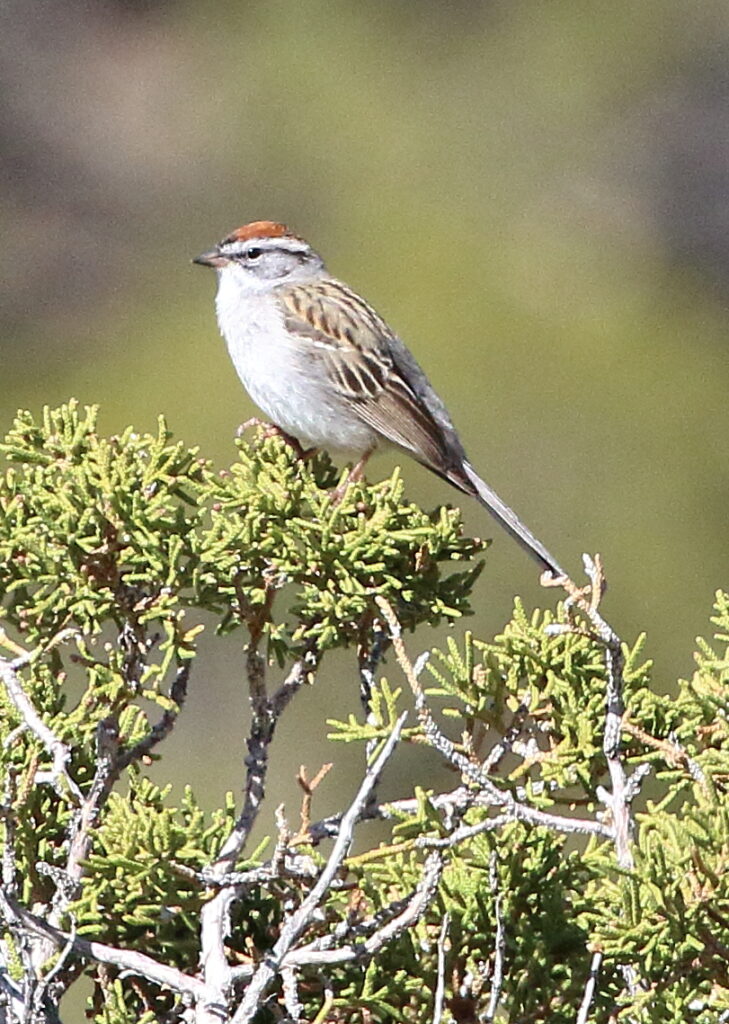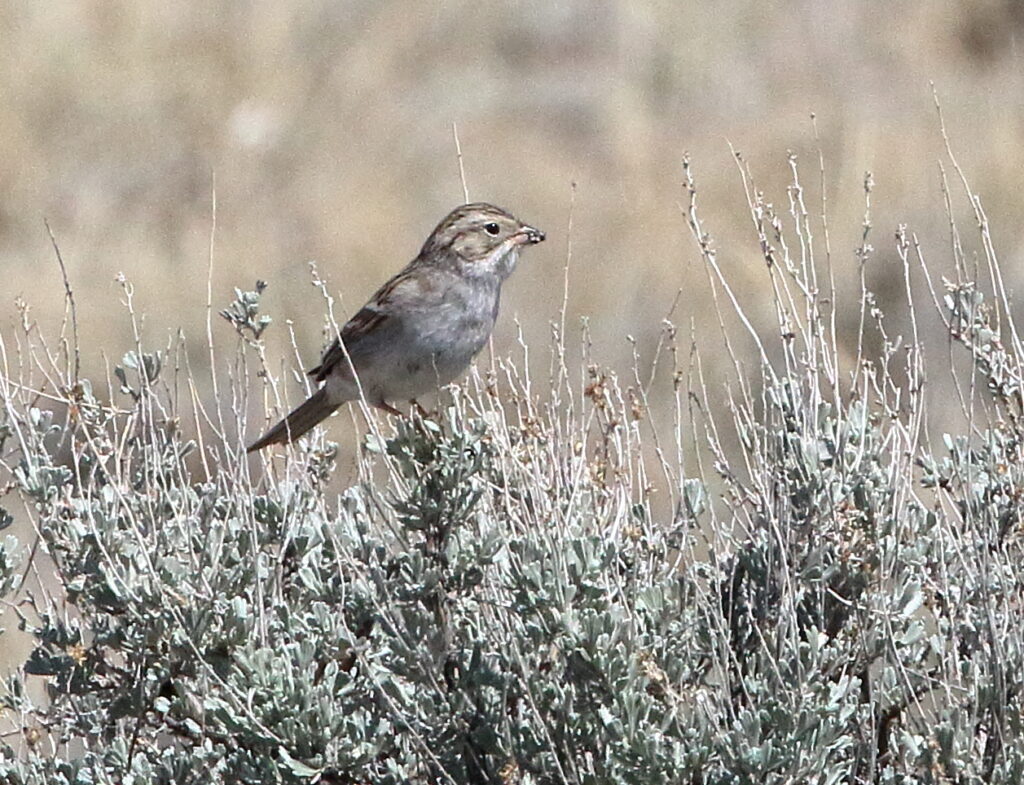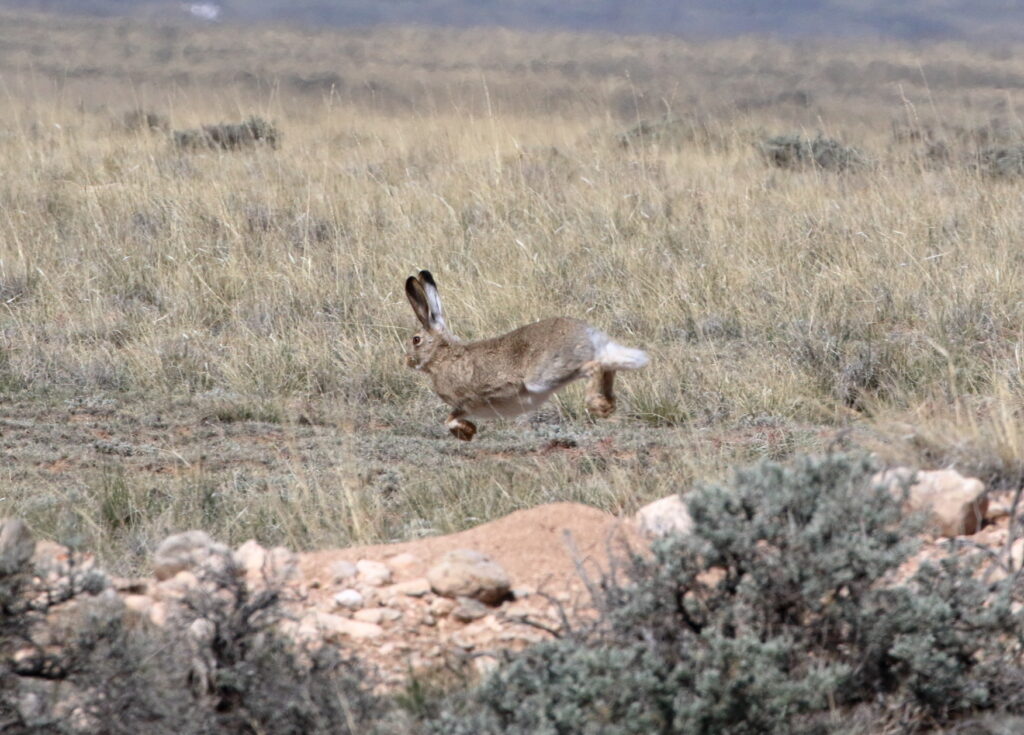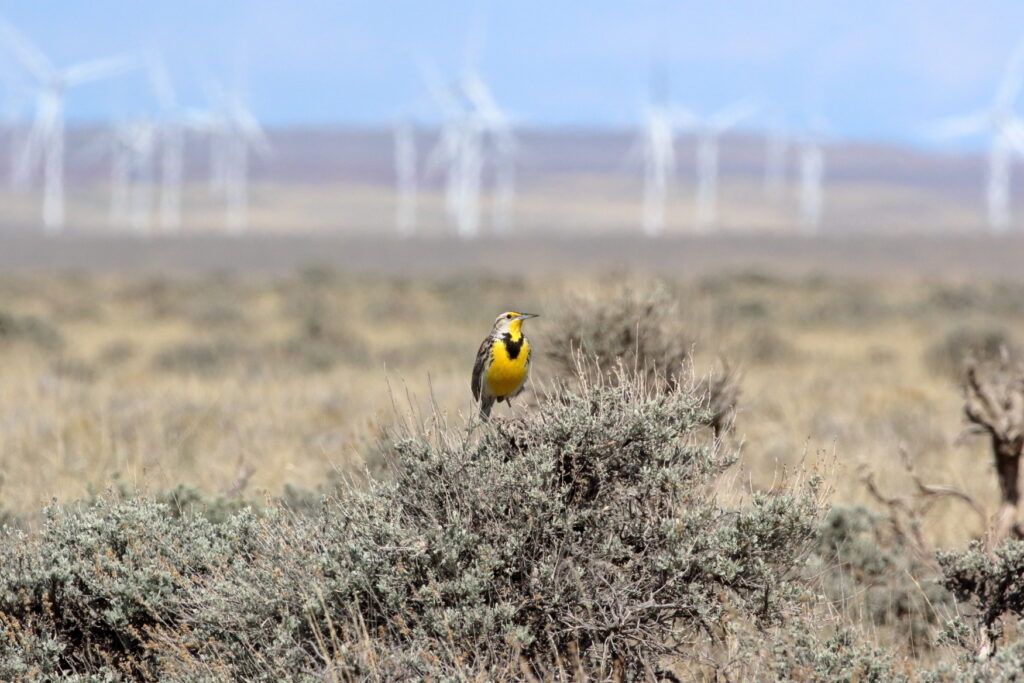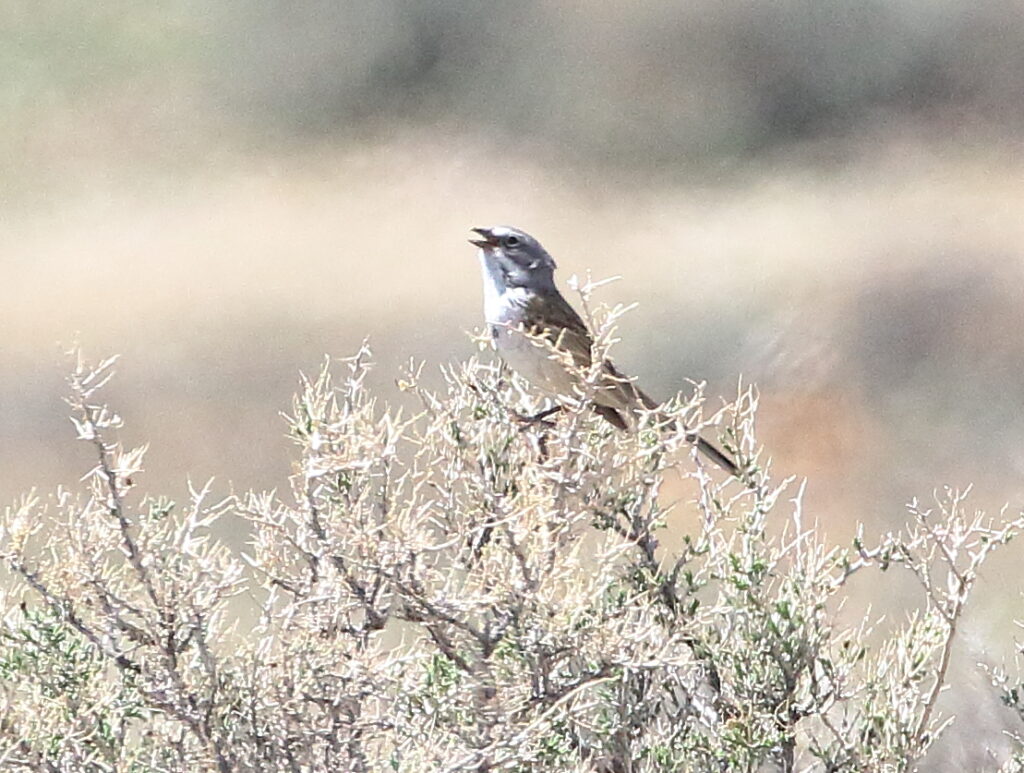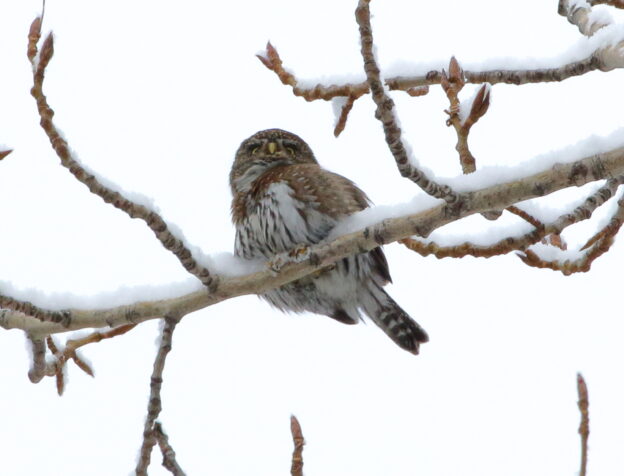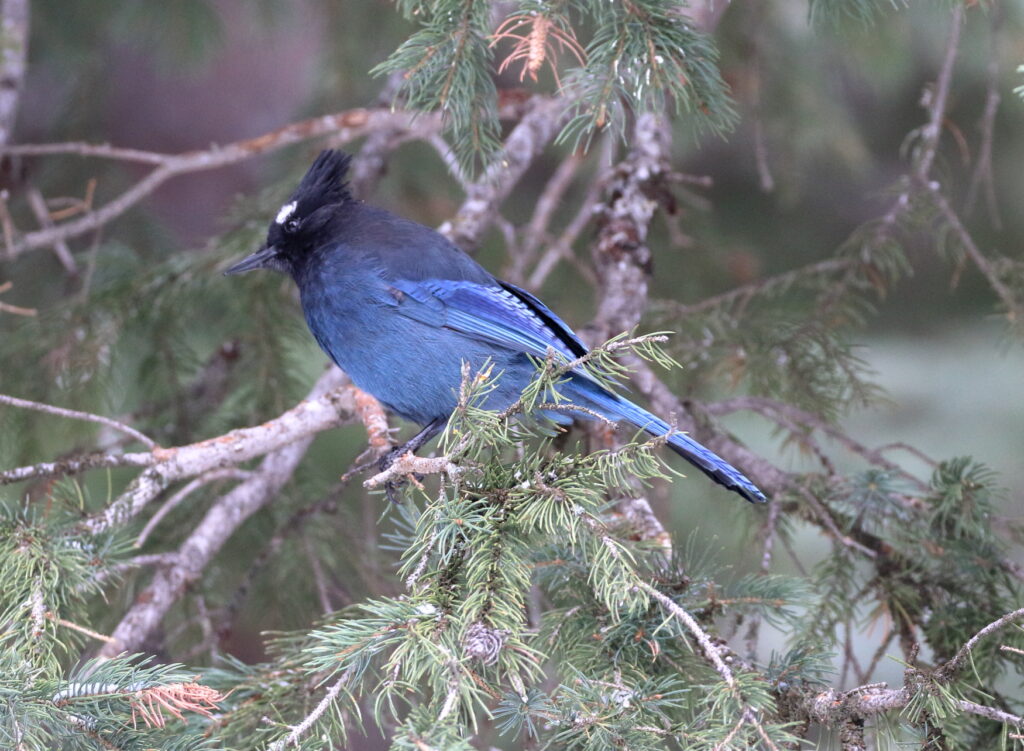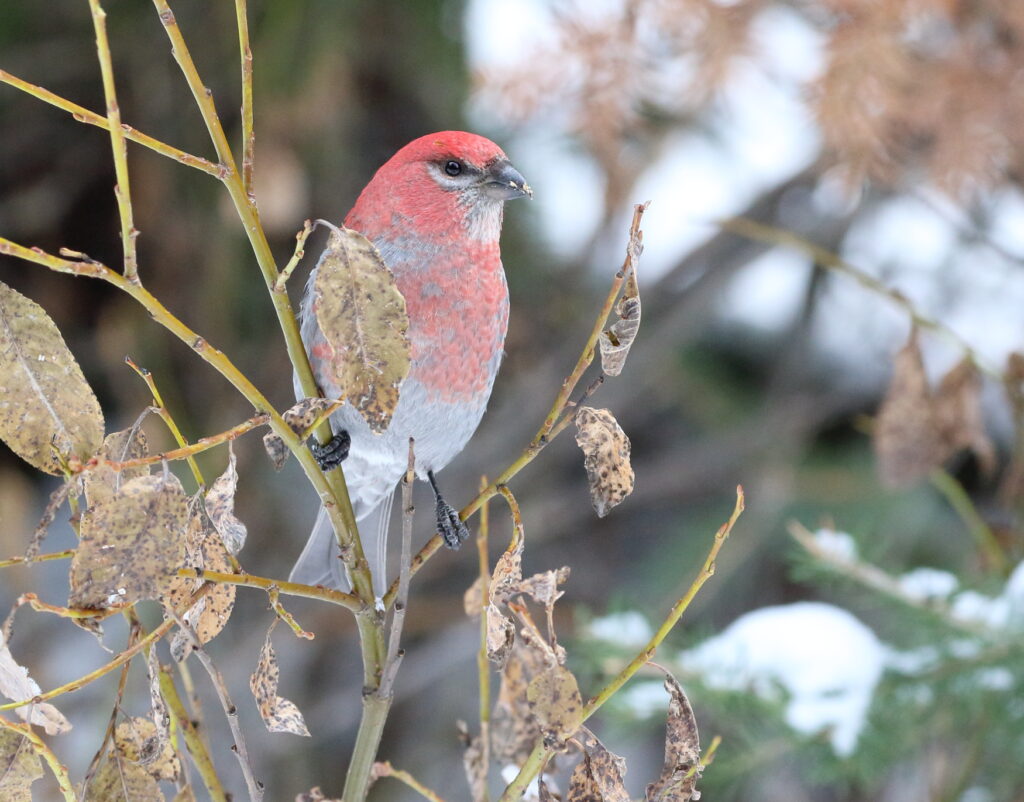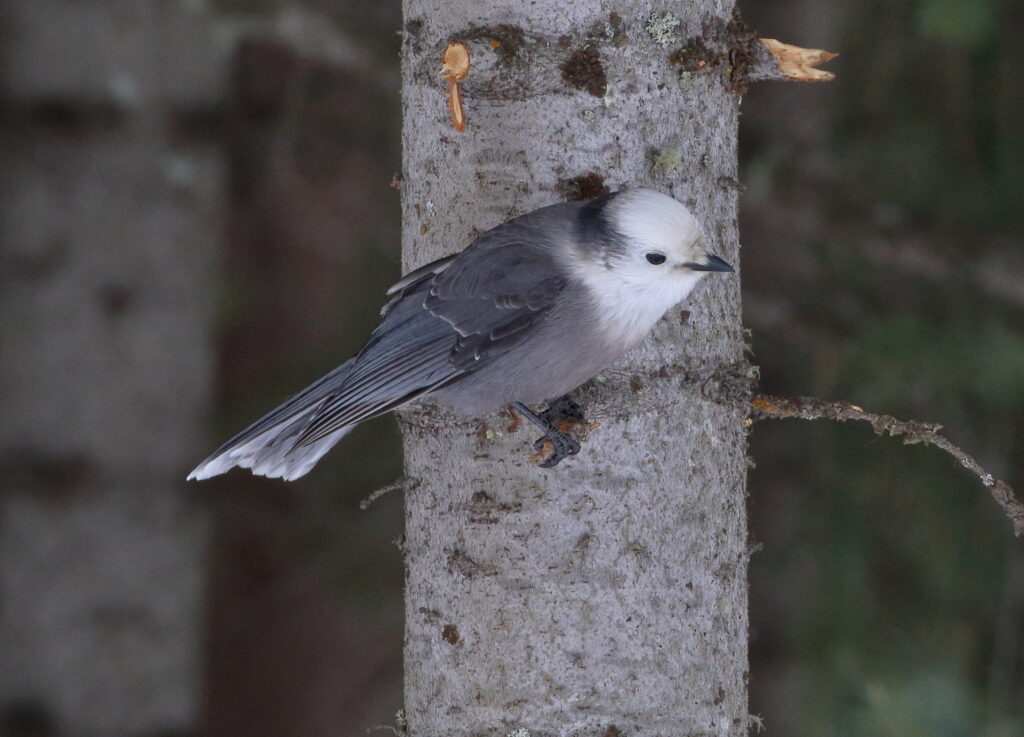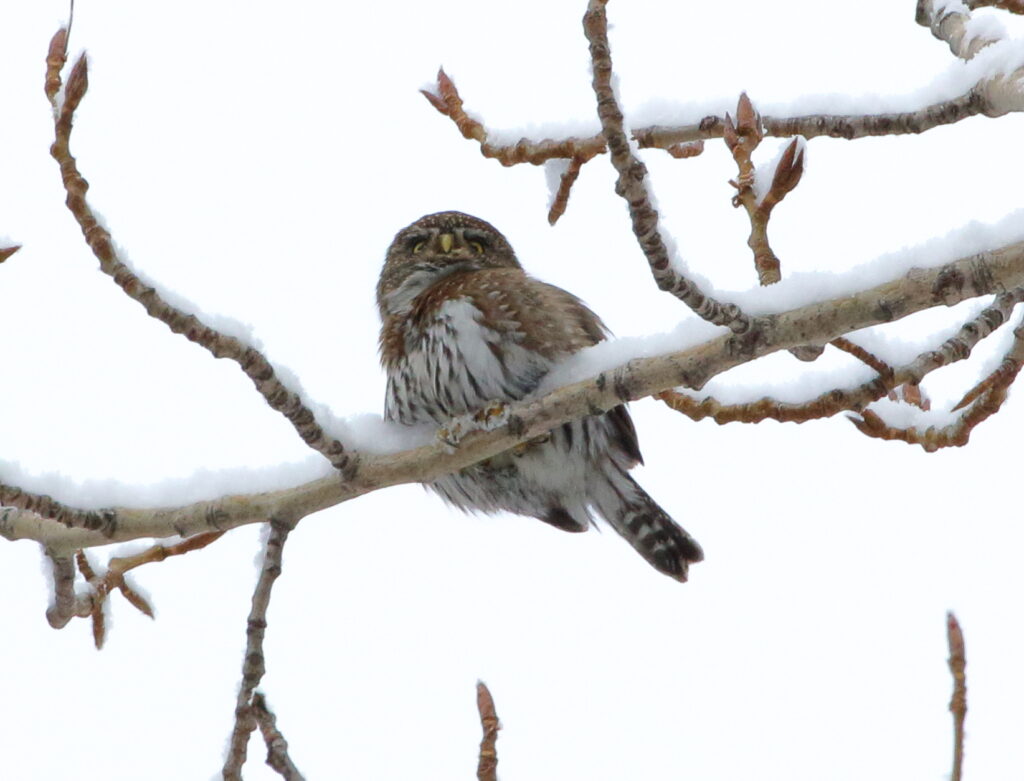Be sure to catch Sneed at the Montana Festival of the Book on Friday, September 8. He will be on a panel at 11:30, followed by his own session about his recent books Waiting for a Warbler and Border Crossings at 1:15. The following Monday, Flathead Audubon will be hosting Sneed for a presentation. Hope to see you there!
This past Friday, Braden and I set out on a quest for a bird that has steadfastly evaded my life list: Spruce Grouse. In truth, I’ve probably seen one of these birds before—but long before I became a birder—and Braden wanted to help me officially nail it down before he headed back to Maine for his junior year of college. To try to find it we decided to explore a road we’d never before birded—the road up to Garnet Ghost Town, a once thriving mining community about ten miles off of Highway 200. Spoiler alert: we didn’t find a Spruce Grouse. What we did find proved to be a lot more interesting.
As I’ve mentioned before, Braden and I used to pretty much write off August as a good birding month. In recent years, shorebirds especially have shown us that this was an egregious mistake. As far as passerines are concerned, however, we retained our bad August attitude. After all, our typical birding areas around Missoula get eerily quiet in August—almost as if all of the birds have gone on vacation. Turns out they aren’t on vacation. They’re working hard—at a little bit different elevation.
As we turned off of the highway, the road to Garnet began climbing in elevation. We saw a few robins and flickers from our car, but in these kinds of situations, you really don’t know what’s around unless you stop, get out, and listen. After a few miles, we did exactly that—and were amazed by what we found. In what is always a good sign, Mountain Chickadees were sounding off, and as we always hope, a lot of other species accompanied them. We quickly spotted MacGillivray’s, Yellow-rumped, and Orange-crowned Warblers—and a warbler that had stubbornly eluded my crummy ears all year, Townsend’s Warbler!
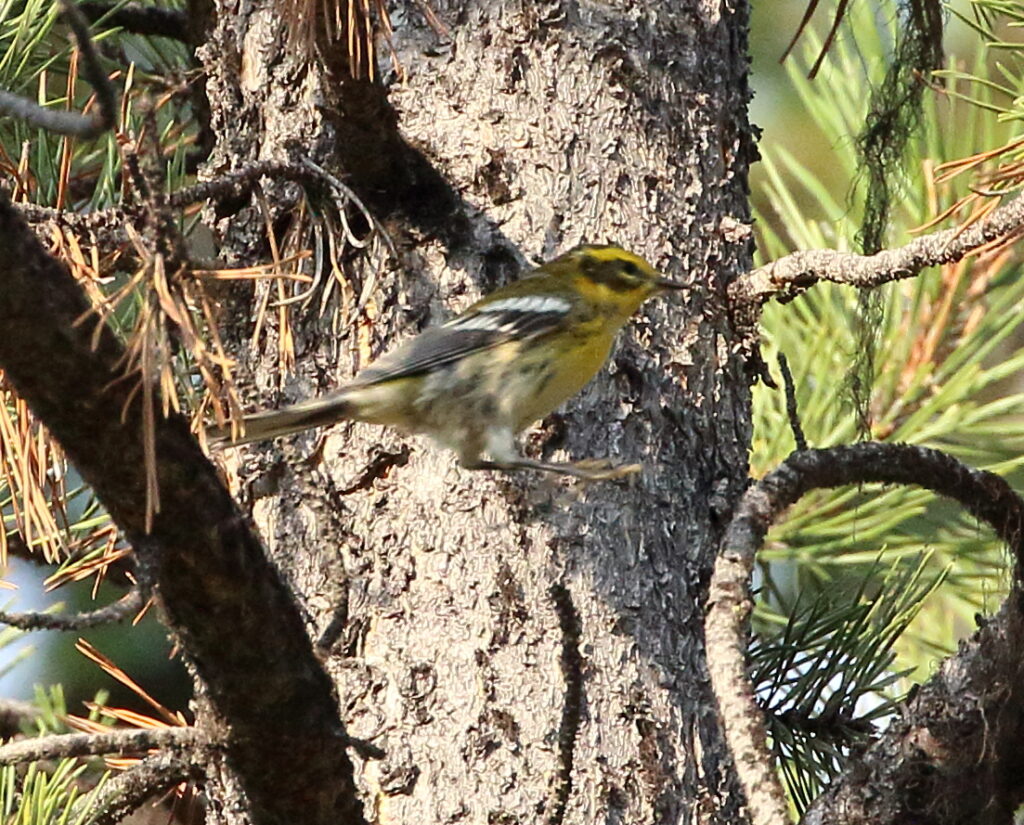
Along with the warblers, Williamson’s Sapsuckers and a Hairy Woodpecker put on a good show, along with Evening Grosbeaks, Canada Jays, Warbling and Cassin’s Vireos, Pine Siskins, and a whole slew of Chipping Sparrows, Western Tanagers, and Ruby-crowned Kinglets. Braden’s excellent ears also detected Golden-crowned Kinglets and a Brown Creeper—the first I’d managed to see all year.
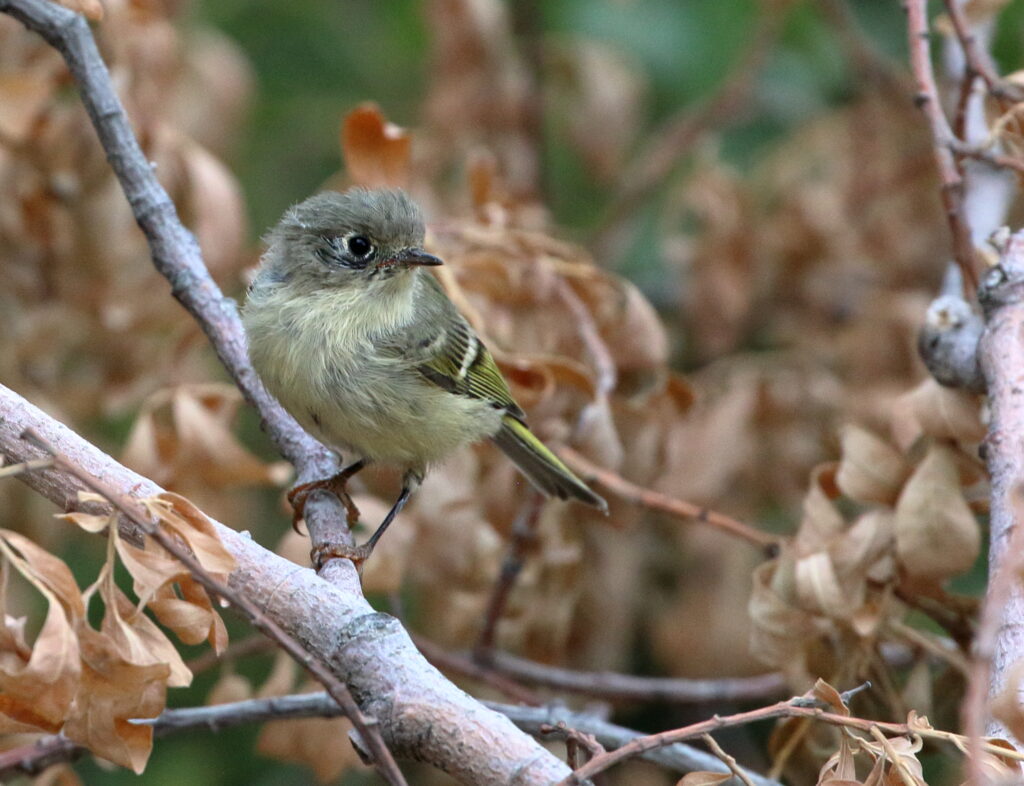
Our next stop a mile or two later gave up an even greater encounter. We saw a bunch of birds heading away from the road so decided to follow them. As a trio of Canada Jays entertained us, we heard a woodpecker methodically pecking away and Braden went to search for it. “Three-toed!” he excitedly called, looking up at a backlit bird high in a tree. Though the yellow head marking was clearly visible, it actually turned out to be an even more surprising bird—a Black-backed Woodpecker, the first I’d ever seen outside a burn area! The habitat made sense, though, as burns weren’t too far away and a lot of dead trees seemed ready to give up beetle grubs.
Our checklist for the Garnet approach road.
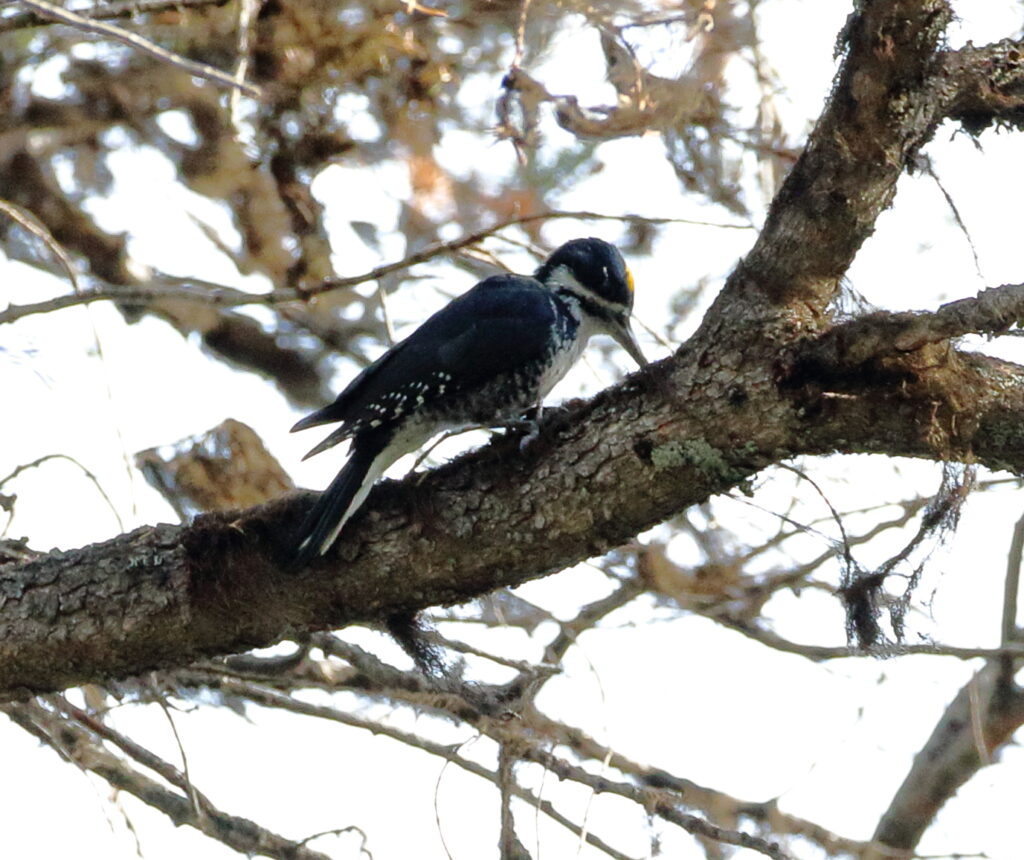
Thrilled with this discovery, we continued onto Garnet Ghost Town. Like most ghost towns, this one has an interesting story. It went from gold boom to bust between approximately 1895 to 1905, and at its peak was home to about a thousand people. By around 1948, the last hangers-on abandoned the town. Thanks to dedicated preservation efforts, however, Garnet today boasts that it is “Montana’s Best-Preserved Ghost Town” and, indeed, the remaining buildings seem in remarkably good shape. Even better, the town sits in a stunning location, surrounded by forests and, even at this time of year, green meadows.
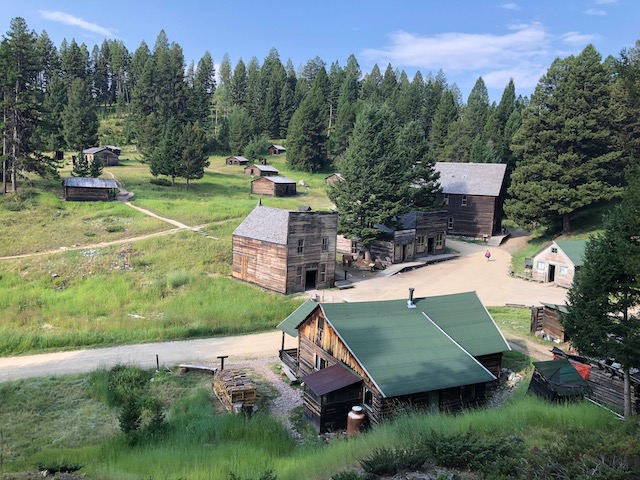
After exploring the town for a few minutes, Braden and I decided to walk a loop trail in a last effort to find a Spruce Grouse. Again, no grouse. We did walk by plenty of caved-in mine shafts, however, and encountered even more cool birds. These included another Williamson’s Sapsucker, a Vaux’s Swift, and two Olive-sided Flycatchers! Then, a Common Night-hawk called above us and we spotted a second one perched in a tree. Garnet, though, had one more treasure for us.
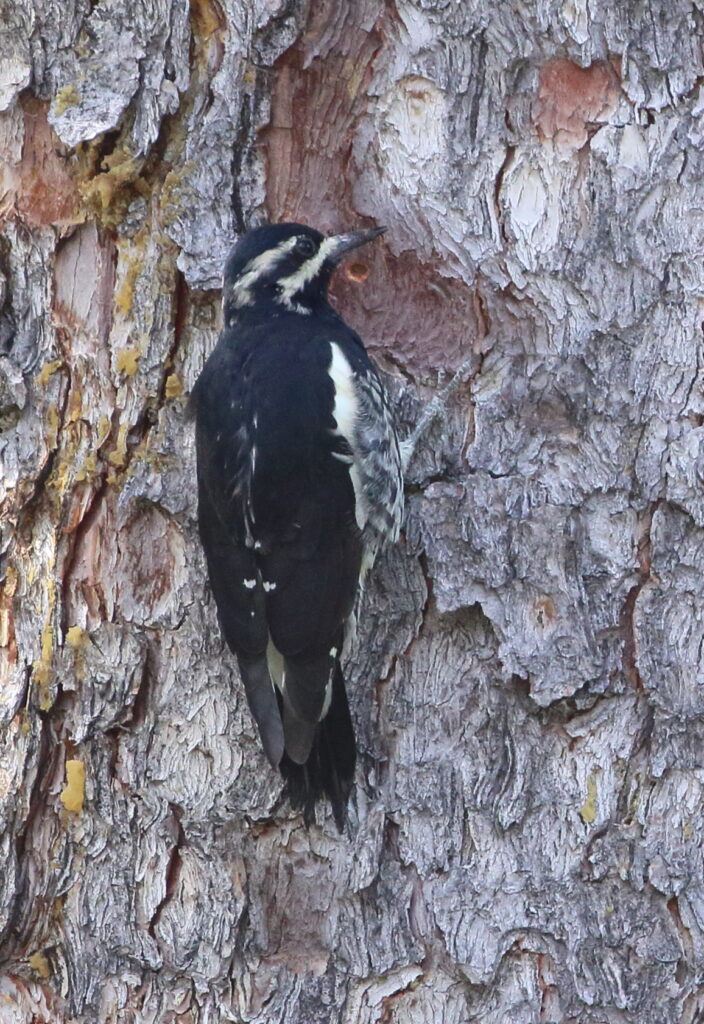
As we neared the end of the loop trail, we saw a bird flitting about on a log. I didn’t at first recognize it, but Braden’s many hours of study paid off. “It’s a Townsend’s Solitaire—and in its ‘pine cone’ plumage!” he exclaimed. I had never heard of the pine cone plumage, but sure enough, this juvenile bird sported a pattern distinctly different from the smoother coloration of the adults. I can best describe it as, well, uh . . . a pine cone!
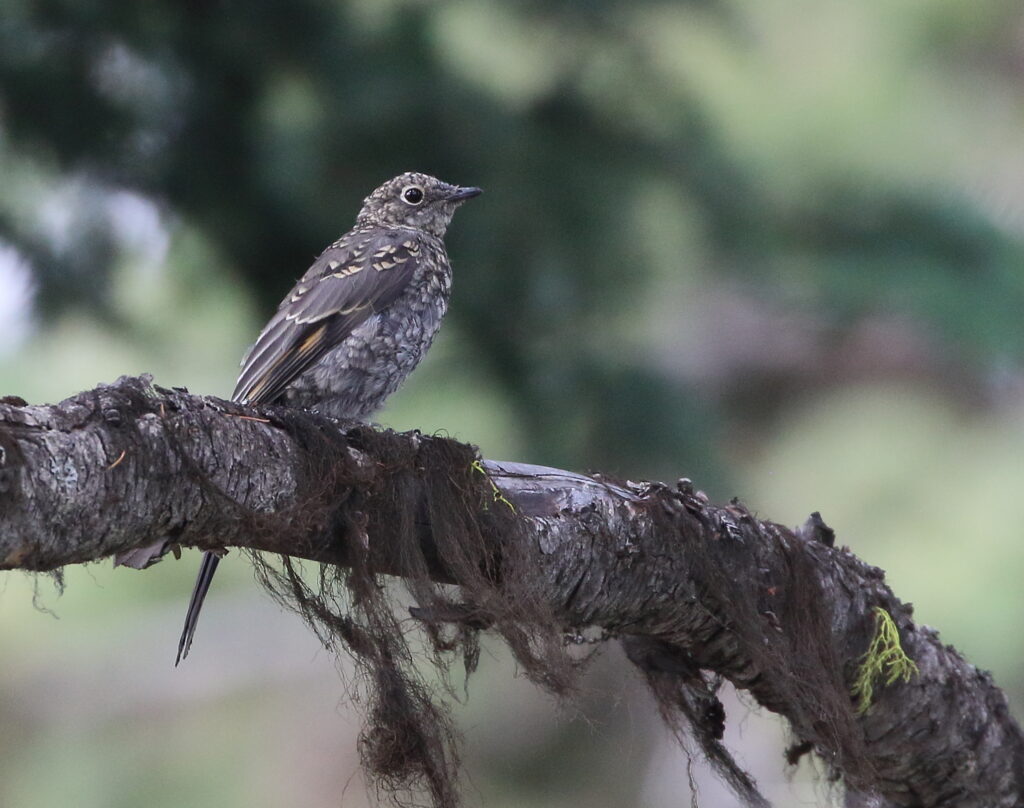
We admired the bird for many minutes and then headed back to our trusty minivan. It had been an outing that far exceeded our expectations, and had proved highly educational. I had heard from Dick Hutto and other biologists that many birds head up to higher elevations to hunt and forage after their babies have fledged, but this was the first time I could remember coming face to face with them—and in such numbers! Though we knew birds continue to face many threats, our experience today made Braden and I both feel better about the state of Montana’s birds, and we excitedly added the Garnet area to our permanent August “must do” birding locations.
Our Garnet Ghost Town checklist.
